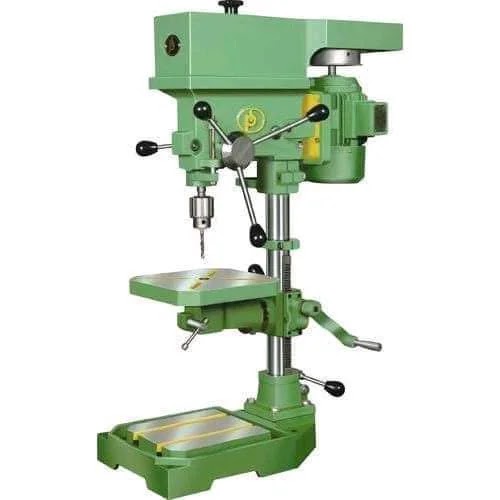Certainly! Here are the answers to your questions:
Q1. Explain why casting is an important manufacturing process?
Casting is an important manufacturing process due to its numerous advantages and applications in various industries. One of the primary reasons for its significance is the ability to produce complex shapes with a wide range of materials, including metals, alloys, plastics, and ceramics. The process involves pouring molten material into a mold, allowing it to solidify and take the desired shape.
Casting offers several advantages, including:
1. Versatility: Casting allows for the production of intricate and complex shapes that may be difficult or impossible to achieve using other manufacturing processes. This makes it suitable for a wide range of applications in industries such as automotive, aerospace, and construction.
2. Cost-effectiveness: Casting is often a cost-effective method, especially for large-scale production. The molds used in casting can be reusable, reducing the cost per unit. Additionally, the ability to produce near-net-shape components reduces the amount of material waste and machining required.
3. Material selection: Casting accommodates a wide range of materials, including various metals and alloys with diverse properties. This flexibility enables manufacturers to select materials based on the specific requirements of the end product, such as strength, durability, or heat resistance.
4. Customization: Casting allows for customization and design flexibility. It enables the incorporation of intricate details, textures, and features into the final product. Additionally, the ability to combine different materials in composite casting expands the range of possibilities.
Q2. Define pattern? State any four types of patterns.
In the context of casting, a pattern is a replica or model of the final object to be cast. It is used to create a mold into which molten material is poured. Patterns are typically made from materials such as wood, metal, or plastic. They play a crucial role in shaping the final product accurately and efficiently.
Four types of patterns commonly used in casting are:
1. Single-piece pattern: This is the simplest type of pattern, representing the complete object in a single piece. It is used when the casting process does not require any complex features or undercuts.
2. Split pattern: A split pattern consists of two or more pieces that can be separated to facilitate the removal of the pattern from the mold. This type of pattern is suitable for complex objects with internal cavities or intricate shapes.
3. Match plate pattern: A match plate pattern consists of two halves, each attached to a plate or board. The two halves of the pattern are aligned and pressed together to form a complete mold. This type of pattern is commonly used in high-production casting processes.
4. Cope and drag pattern: The cope and drag pattern consists of two separate halves, the cope and the drag, which are aligned and joined to create the complete pattern. The cope forms the top half of the mold, while the drag forms the bottom half. This type of pattern is often used in sand casting.
Q3. What are the differences between the solidification of pure metals and metal alloys?
The solidification process of pure metals and metal alloys differs due to the composition and structure of the materials involved. Here are some key differences:
1. Solidification temperature: Pure metals have a specific melting and solidification temperature. They transition directly from the liquid phase to the solid phase at a fixed temperature. In contrast, metal alloys have a range of temperatures over which solidification occurs due to the presence of multiple elements with different melting points.
2. Freezing range: Pure metals solidify over a narrow temperature range, resulting in a clear melting point. Metal alloys, on the other hand, have a broader freezing range due to the presence of different elements. This can lead to a gradual solidification process rather than a sharp phase transition.
3. Microstructure: Pure metals generally have a simple, homogeneous microstructure when they solidify. They tend to form regular, well-defined crystal structures. In contrast, metal alloys can have complex microstructures due to the interaction of different elements. This can result in the formation of various phases, such as grains, intermetallic compounds, or eutectics, depending on the specific alloy composition.
4. Solidification shrinkage: Pure metals usually undergo a predictable amount of solidification shrinkage. This shrinkage occurs uniformly and is relatively easy to control. Metal alloys, however, may experience uneven solidification shrinkage due to the presence of different elements with varying atomic sizes. This can lead to defects like porosity or shrinkage voids if not properly managed.
Q4. What is the function of a core? What is core venting?
In casting, a core is a removable part that is used to create internal cavities or features in the final casting. Cores play a vital role in shaping the hollow sections, recesses, or intricate details of a casting. They are typically made from sand, metal, or ceramic materials and are positioned in the mold before pouring the molten material.
The functions of a core include:
1. Creating internal cavities: Cores are used to generate internal voids or cavities within the casting, such as hollow sections, passages, or internal threads. These features cannot be achieved by the external mold alone.
2. Providing structural support: Cores add structural support to the casting, especially in areas where the thickness is insufficient to maintain shape during the casting process. They help prevent distortion or deformation of the final product.
3. Shaping complex features: Cores enable the creation of intricate and complex features, such as undercuts or recesses, which cannot be formed solely by the external mold. The core provides the additional shape necessary for these features.
Core venting is a technique used to allow the escape of gases or air trapped within the mold cavity during the casting process. It involves creating small channels or vents within the core to provide a path for the gases to escape. This helps prevent defects such as gas porosity or blowholes in the final casting.
Core venting can be achieved by incorporating venting pins or rods into the core, which extend to the outer surface of the mold. These venting channels allow the gases to be expelled as the molten material fills the mold. Proper core venting is essential to ensure the quality and integrity of the casting by minimizing the risk of trapped gases and resulting defects.
.webp)



.webp)





0 Comments